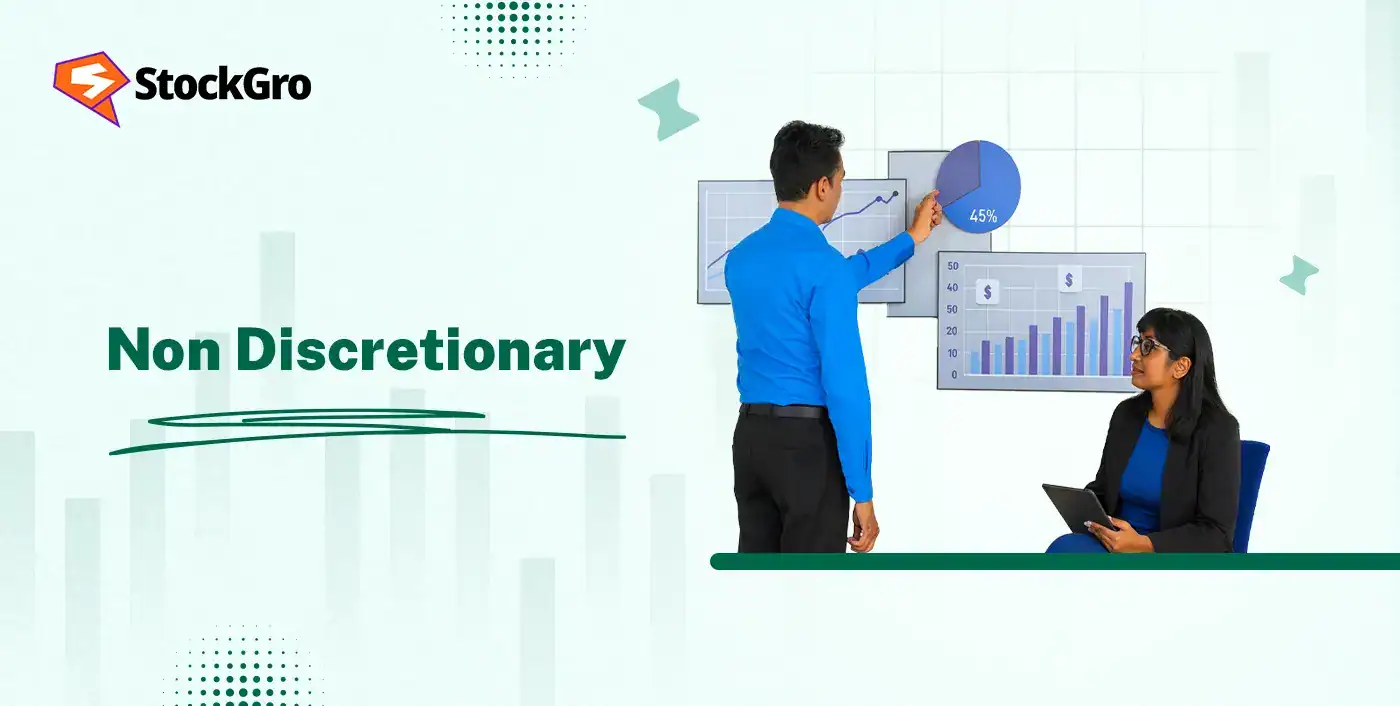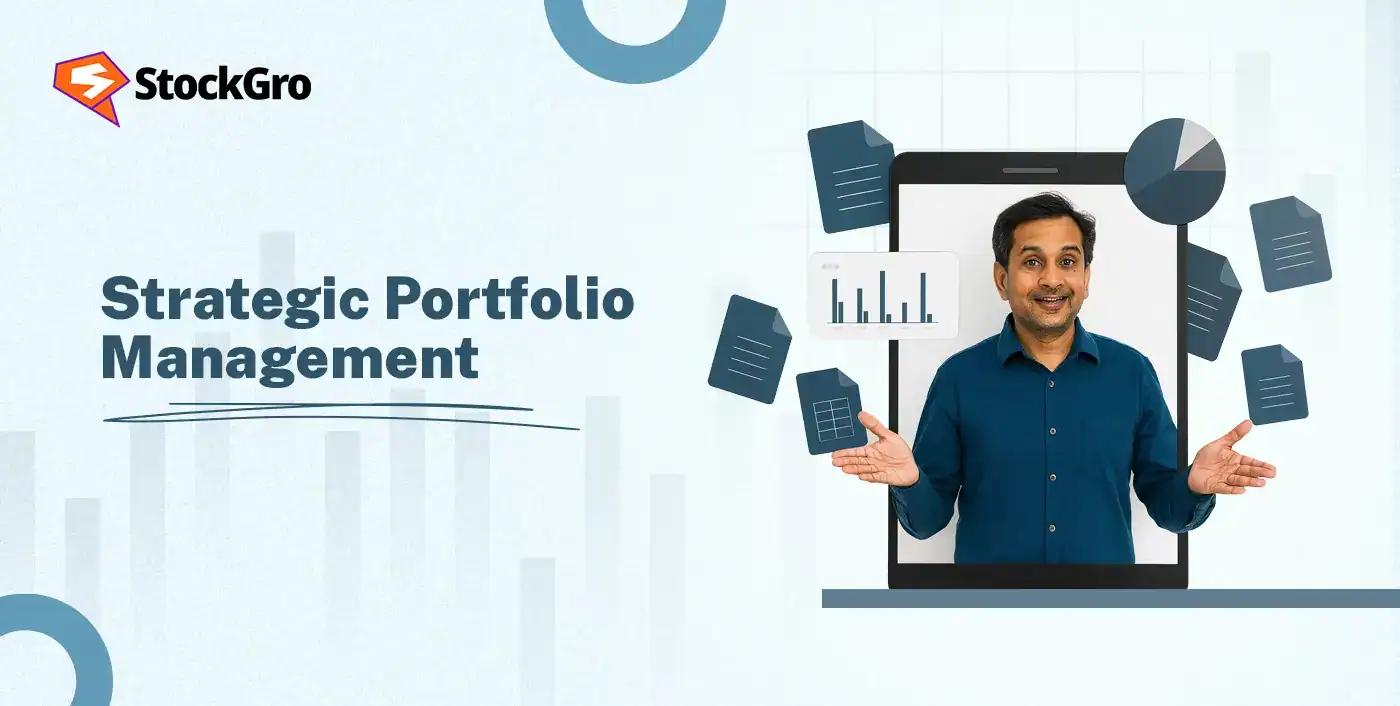
According to SEBI data, the total AUM (Assets Under Management) managed by PMS (Portfolio Management Services) stands at ₹40.33 lakh crore today. This figure clearly indicates that investors are seeking a structured approach to manage their investments. This is where non-discretionary portfolio management comes into play- providing you with expert guidance without taking away control.
What Is Non-Discretionary Portfolio Management?
In non-discretionary portfolio management is a types of portfolio management where you keep the authority. The manager gives recommendations, but must get your approval to execute trades. This ensures you have both transparency and control.
Discretionary vs Non-Discretionary: Core Differences
Some of the key differences between discretionary and non-discretionary management are given below:
| Basis | Discretionary | Non-Discretionary |
| Decision-making | The manager takes all the decisions | The manager advises, the client takes the decisions |
| Execution Time | Faster execution, can quickly adapt to market movements | Delay in action, as client’s approval is required |
| Control | The control lies with the manager | The client has full control |
| Responsibility | The manager is fully responsible for the portfolio’s performance | Shared responsibility between the client and the manager |
| Customisation | Lower room for customisation, manager’s strategy is followed | Customisation as per the specific needs of the client |
Advantages of Non-Discretionary Management
If you opt for non-discretionary portfolio management, you will have the following advantages:
1. Control
You stay in full control of every action in your portfolio. The manager is limited to only providing suggestions; the final decision is taken on your command.
2. Expert Guidance
Based on their knowledge, research, and market conditions, the manager provides guidance in the form of recommendations. You get an expert’s advice, which you can use to finalise your decision.
3. Transparency
Every suggestion and every trade is discussed with you before its execution. This ensures that your portfolio is functioning in a transparent manner without any hidden actions.
4. Customisation
The portfolio can be tailored to meet your specific needs and goals- based on your risk appetite and time horizon. You are not bound to follow the manager’s strategy but can devise your own.
Drawbacks and Trade-Offs
You should consider the following drawbacks and trade-offs when opting for non-discretionary portfolio management:
1. Time Commitment
You have to actively commit your time to learn about the markets and tracking market movements. If you’re not interested in the market, using this style will drain you and your investments.
2. Delay In Action
As every trade has to go through your approval, it slows down the execution process, which may lead to you missing out on sudden market movements.
3. Reliance On Communication
Timely communication between the manager and client, where both parties have a good understanding of each other, is crucial. Any communication gaps and/or misinterpretations can negatively affect the portfolio.
Who Should Consider NDPM?
Non-discretionary portfolio management(NDPM) is not for everyone. You should consider NDPM if:
- Want to have the final say in decisions.
- Possess prior knowledge about financial markets.
- Actively track and monitor financial news and data.
- Retain control over your investments.
If you meet some or all of the above criteria, non-discretionary portfolio management is suited for you. It will provide you with a “hands-on” experience where you will make decisions, guided by the experts.
How NDPM Works: Process Overview
The NDPM process is very similar to the portfolio management process. It just has an added layer of the client’s approval. The steps in the NDPM process are as follows:
1. Setting-Up Goals:
The manager meets with you to understand your needs. Based on the needs, he sets up goals based on your risk tolerance and time horizon.
2. Asset Allocation:
After setting up goals, the manager designs the portfolio by allocating different asset classes and their weight in your portfolio. It serves as a blueprint for your portfolio.
3. Portfolio Construction:
The manager provides you with recommendations on which particular assets to invest in. You can make a decision based on them. The assets you chose will make up your portfolio.
4. Implementation:
After getting your approval, the manager executes the trade, and your portfolio comes into existence.
5. Monitoring and Reporting:
You receive regular reports and updates on your portfolio’s performance from the manager. He also provides you with suggestions based on changing market conditions and financial goals.
6. Rebalancing:
With time, fluctuations in the market or alterations in your financial goals may cause the portfolio to drift away from its objectives. The manager takes all this into account and provides you with guidance that aligns your portfolio with your investment strategy and helps in achieving sustainable growth.
Real-World Examples and Use Cases
To get a better understanding of the use case of non-discretionary portfolio management, let’s look at an example:
Two friends, Mr. X and Mr. Y, are looking for a portfolio management service. Both are confused about which style would suit their needs the best.
Mr. X works in an MNC from 9 to 5. After his job, he likes to read financial news, track the market movement, and learn about the changes in the macroeconomy. He also likes to manage his own investments.
On the other hand, Mr. Y is running a startup. All of his time is spent working on his company, and at the end of the day, he is too tired to learn or track the markets. He wishes for an autonomous service where his contribution is limited.
For Mr. X, a non-disciplinary style is better as it provides him with the control he is looking for. He already has market knowledge and can use the expert’s advice to make decisions.
Mr. Y would benefit more from a discretionary style, as by handing over the authority, he can focus on his investments while the portfolio manager looks after his investments.
Conclusion
Today, the investors are getting more active and want to use their own knowledge to make money. Non-discretionary portfolio management provides them with a perfect balance between control and expert guidance. By retaining the authority, you are granted full control, transparency, and customisation, which you can use to manage your portfolio as per your investment objectives, risk tolerance, and time horizon.
If you are looking for a strategy that emphasises investor-controlled portfolio management, non-discretionary portfolio management is the right solution for you.
FAQs
In discretionary management, the portfolio manager makes decisions on your behalf. In non-discretionary management, the portfolio manager only gives recommendations, and the decisions are approved by you.
Non-discretionary portfolio management provides you with the benefit of authority, transparency, customisation, and guidance by experts.
The downside of non-discretionary portfolio services is delays in execution, heavy reliance on communication, and commitment to active involvement.
If you want to manage your money without losing control, you should choose a non-discretionary style of portfolio management.
By adding a layer of consistent client involvement, non-discretionary portfolio management provides a more hands-on experience where you retain the power and get expert guidance.
Since every trade requires your approval, it makes non-discretionary portfolios slower to market changes in comparison with discretionary services.

